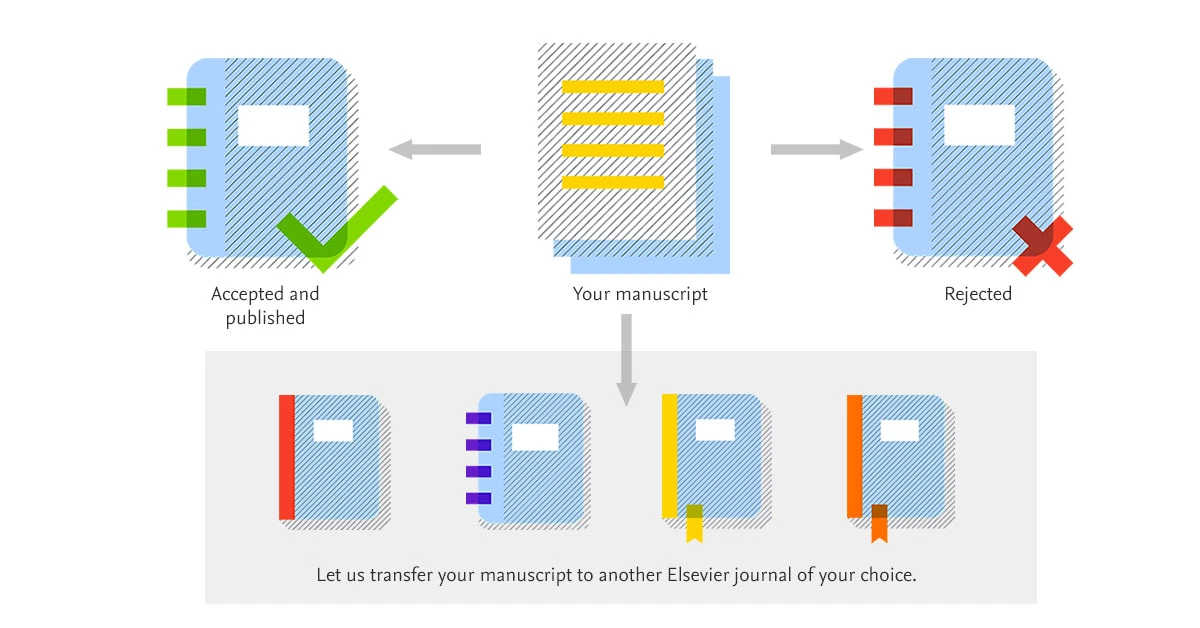How article transfer services are helping our authors and editors
2022年10月3日
Marie Coombe

Societies are increasingly using article transfer services; the Editor-in-Chief of the Journal of Shoulder and Elbow Surgery talks about new features and benefits
We know that having research reviewed and distributed to the scientific community is hugely important to researchers, yet millions of authors have their submissions rejected each year. Many of these rejected articles hold academic value, and approximately half go on to be published in another journal.
However, submitting to a new journal adds extra effort and delay into the process for authors, so the benefit of transferring manuscripts between journals is clear: it helps authors find the right journal for their manuscript quickly and easily. Not only does this save the author time and effort but it also reduces the amount of work required by others during the editorial process.
Article transfer involves facilitating the submission of the rejected manuscript to a more suitable journal. Article transfer is not a new concept in academic publishing, but more journals than ever have started to offer article transfer support to their authors. Elsevier now offers article transfer solutions for more than 1,600 journals, including over 400 society titles. Societies such as the American Gastroenterological Association 在新的选项卡/窗口中打开, the Institution of Chemical Engineers 在新的选项卡/窗口中打开 and the Royal Society for Public Health 在新的选项卡/窗口中打开 are becoming increasingly aware that the ability to transfer articles is hugely important to authors and is something we should all strive towards in our mission to improve collaboration across scientific communities. For societies publishing multiple journals, it can also help them capture articles in their own journal ecosystem, strengthening the society’s value and relevance in their particular discipline.
The Journal of Shoulder and Elbow Surgery 在新的选项卡/窗口中打开 (JSES), the official publication for eight leading specialty organizations including American Shoulder and Elbow Surgeons 在新的选项卡/窗口中打开, is just one example of a society-owned journal that is participating in an Article Transfer Service. JSES has made over 2,000 transfer offers to rejected authors since January 2020, which is over 65% of its rejected papers.
We asked Dr William Mallon 在新的选项卡/窗口中打开, Editor-in-Chief of the JSES family of journals 在新的选项卡/窗口中打开, for his thoughts on article transfer.
How does the Journal of Shoulder and Elbow Surgery transfer rejected papers to other journals?
My reviewers and associate editors often make a recommendation after peer review to transfer a paper to another journal within the JSES family of journals. I almost always follow their recommendations and transfer the article via the online Editorial Manager (EM) system, which is easy to do at the point of rejection — it’s just a few clicks.
What about research that isn’t suitable for publication in one of your companion JSES titles? Are you able to offer any transfer recommendations for those papers?
We are and we do that, though it’s less common. There is an option within the EM to do this for a non-related journal. As Editor-in-Chief, I also recommend to some authors that this article may fit better in a different type of journal — radiology, anesthesia, pediatrics, etc. In addition, we recently started using an automated service, known as Resubmission Assistant, that is author-driven, and the authors get to make the transfer choice. Authors receive their rejection letter from a JSES journal as normal, but they then receive a separate email guiding them to the Author Hub landing page, which offers AI-driven journal suggestions. [*Please note that because this is a separate correspondence, this email in no ways implies any endorsement from the original journal.] What are the benefits of this automated transfer service?
It makes my life much easier because the transfer is so easy to do. The best thing is that it doesn’t interfere with our own article transfer offers within our JSES family. Authors only receive the email guiding them to the AI-generated journal recommendations in cases where we haven’t offered a transfer to one of our companion JSES titles.
Are you concerned about rejected papers being offered a transfer when they shouldn’t be published?
I don’t think so because we still reject a certain number of papers. Further, after transfer, the editors of the other journals still have the option to reject the paper if they think it is not appropriate for their journal. [*Note that if an article is rejected on, for instance, ethical grounds, it will not be transferred.]
Do you think these transfer solutions are a positive option for the authors?
Absolutely. The rationale for starting the JSES family of journals was the huge number of submissions we were receiving which, with publishing limitations on the number of issues and pages, necessitated a fairly high rejection rate. Since JSES is a sub-specialty journal, there were often few other options for authors to reach out to if we rejected their article. The JSES family of journals expanded those options for authors. I also like that the author is in control; for the automated transfer offers, the authors receive several AI-based journal suggestions and then choose which journal to submit their paper to next. The JSES transfer process allows us to support the author community, which is the right thing to do.
Dr Stewart Bland, Director of Publishing Strategic Initiatives at Elsevier, summarized the benefits of article transfer by saying: "With a reduction to overall workload, a potentially more positive outcome for rejected authors, and lower referee fatigue, article transfers are a win-win-win for authors, editors and reviewers." We are continuing to develop workflows that better suit journals and their subject communities. If you would like to discuss the transfer opportunities available for your journals, please reach out to us through your regular publishing contact.
撰稿人

MC